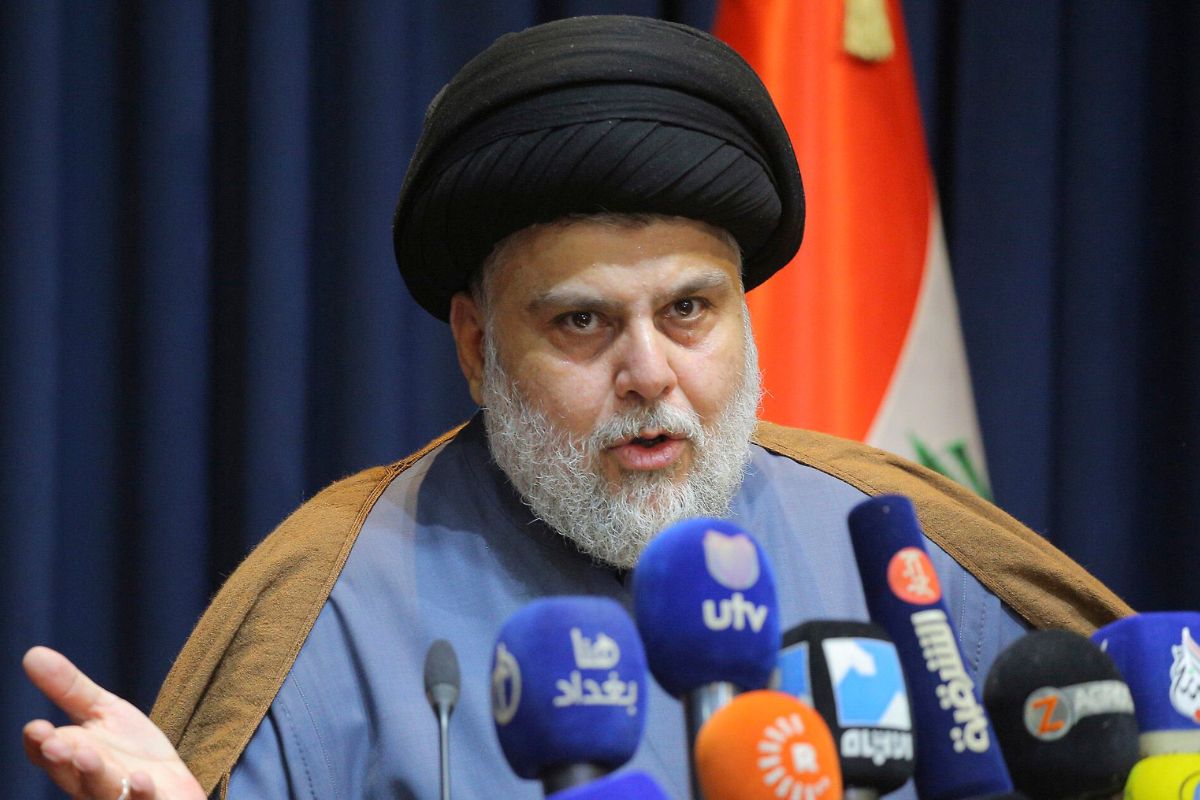Prince Harry declares US home, renounces British residency
Prince Harry officially makes the United States his primary residence, renouncing ties to the UK royal family in a significant move.
In June, al-Sadr’s 73 legislators quit their seats in a move seen as an attempt to pressure his rivals into fast-tracking the formation of a government.

Image source Twitter, Muqtada al-Sadr
It is becoming increasingly palpable that the political standoff in Iraq, ignited by the siege of parliament by supporters of the powerful Shia leader, Muqtada al-Sadr, might persist for some time yet. The fact that they have erected tents would suggest that they are gearing up for a long sit-in, deepening the conflict between the executive and the legislature in a volatile state. On Saturday, supporters of the firebrand al-Sadr forced their way into the legislative chamber for the second time in days, after last October’s elections failed to lead to the formation of a government. “The demonstrators announce a sit-in until further notice,” al-Sadr’s movement said in a brief statement by the state news agency, INA. Nearly 10 months after the elections, Iraq is still without a new government despite intense negotiations between factions. This appears to be at the core of the crisis.
Government formation in the oil-rich country has involved complex negotiations ever since the 2003 invasion led by the United States toppled Saddam Hussein. Supporters of al-Sadr, who once led a militia against the US and Iraqi government forces, oppose a rival, pro-Iran Shia bloc’s pick for prime minister ~ Mohammed Shia alSudani. “We don’t want Mr al-Sudani,” said one protester. Al-Sadr’s bloc emerged from elections in October as the biggest parliamentary faction, but was still far short of a majority, causing the longest political vacuum in the country since 2003. In June, al-Sadr’s 73 legislators quit their seats in a move seen as an attempt to pressure his rivals into fast-tracking the formation of a government.
That led to a pro-Iran bloc, the Coordination Framework, becoming the largest in parliament, but still there was no agreement on naming a new Prime Minister, President or cabinet. Saturday’s demonstration came three days after crowds of al-Sadr supporters breached the Green Zone and entered the legislature on Wednesday. The protesters have pledged not to leave the headquarters until their demands are met. Despite calls for calm from local and international institutions, protesters seem to be determined to continue their sit-in until their demands are met. Ahmed Rushdi, president of the House of Iraqi Expertise Foundation, said the protesters have three factors to reach their “end game”: keeping Mustafa al-Kadhimi as a Prime Minister, keeping the electoral committee and keeping the elections law.
Advertisement
The three angles of the triangle are very important to get more than 100 seats in the next elections, which Sadrists said could be happening in about three to six months. The deadlock marks Iraq’s biggest crisis in years. In 2017, Iraqi forces, together with a US-led coalition and Iranian military support, defeated the Isis group that had taken over a third of Iraq. Two years later, Iraqis suffering from a lack of jobs and services took to the streets demanding an end to corruption, new elections and the removal of all parties, notably the powerful Shia groups that have run the country since 2003.
Advertisement